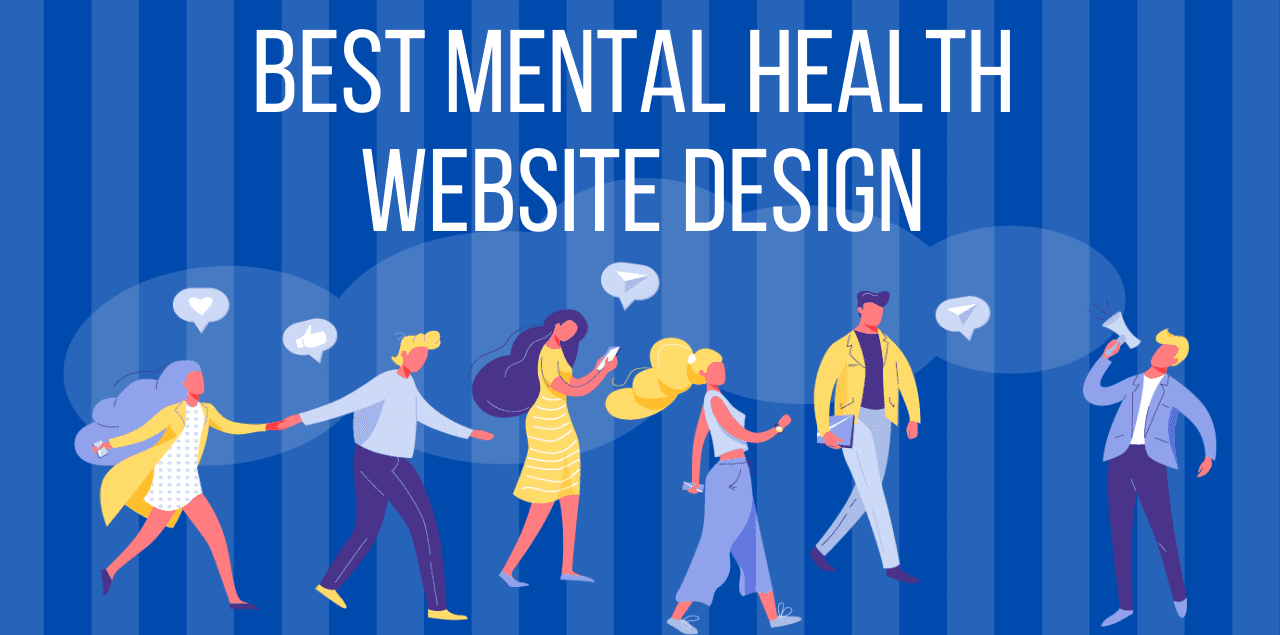In an era where technology intertwines with every aspect of our lives, the importance of a well-designed website for mental health professionals cannot be overstated. As individuals increasingly turn to the digital realm to seek mental health support, the design of these online spaces plays a pivotal role in fostering connection, trust, and a sense of safety. This blog delves into the intricacies of mental health website design, offering insights tailored for psychotherapists and psychiatrists.
Understanding the Digital Landscape
The first step in creating an effective mental health website is understanding the unique challenges and opportunities presented by the digital landscape. Individuals seeking mental health support often navigate a vulnerable journey, and the website should reflect empathy, professionalism, and accessibility. Learn how to create a digital sanctuary that fosters trust, connection, and healing for those seeking support.
1. User-Centric Design
A user-centric design is paramount in mental health website development. Consider the emotional state of your audience and craft an intuitive, easy-to-navigate interface. Minimalistic designs with calming colors and clear typography can contribute to a serene browsing experience.
2. Establish Trust Through Design Elements
Trust is the cornerstone of any therapeutic relationship. Convey professionalism through a clean, organized layout. Include professional photos, bios, and credentials prominently on the website to humanize the professionals behind the screen.
3. Clear and Accessible Information
Ensure that essential information such as contact details, location, and appointment procedures are easily accessible. Use simple language to explain complex concepts, making the content approachable for a wide range of audiences.
Tailoring Design for Psychotherapists
For psychotherapists, the website serves as an extension of their therapeutic practice. The design should reflect the therapeutic approach, values, and a commitment to providing a safe space for healing.
1. Reflective Design Elements
Incorporate elements that reflect the therapeutic process, such as images of nature, calming colors, or symbols associated with healing. These elements contribute to a sense of calmness and comfort, fostering a therapeutic atmosphere even in the digital realm.
2. Integration of Blog or Resources Section
A blog or resources section can serve as an educational hub, providing valuable information to visitors. This not only showcases the therapist’s expertise but also adds a personal touch, demonstrating a commitment to supporting mental health beyond individual sessions.
Designing for Psychiatrists
Psychiatrists, often dealing with a more clinical aspect of mental health, should focus on combining professionalism with a welcoming atmosphere.
1. Integration of Mental Health Assessments
Consider incorporating secure online assessments to help visitors understand their mental health needs. This demonstrates a commitment to comprehensive care and positions the psychiatrist as a resource for both diagnosis and treatment.
2. Highlighting Treatment Modalities
Clearly outline treatment modalities, medication management approaches, and therapeutic philosophies. Use straightforward language to demystify the process and alleviate potential anxieties associated with psychiatric care.
Responsive and Mobile-Friendly Design
With the majority of internet users accessing content on mobile devices, it’s imperative to ensure your mental health website design is responsive. A mobile-friendly design guarantees that individuals can access your website seamlessly, fostering inclusivity.
Security and Confidentiality
Emphasize the importance of privacy and security throughout the website. Highlight secure communication channels, encryption methods, and any additional measures taken to safeguard the confidentiality of user information. This builds trust and reassures potential clients about the safety of seeking support online.
Incorporating Testimonials and Success Stories
Real-life testimonials and success stories can be powerful tools in building credibility. Feature them prominently on the website to showcase positive outcomes and instill confidence in potential clients. Ensure you have proper consent and anonymize details to maintain confidentiality.
Call to Action and Contact Information
Clearly define the next steps for visitors. Implement a strong call-to-action (CTA) that guides them towards scheduling an appointment, reaching out for more information, or accessing resources. Provide multiple contact options to accommodate individual preferences.
Optimizing for Search Engines (SEO)
Enhance the visibility of your mental health website by incorporating SEO best practices. Use relevant keywords, create informative content, and optimize meta titles and descriptions to improve search engine rankings. This increases the likelihood of individuals finding your website when searching for mental health support.
Conclusion
In crafting a psychotherapy website design for professionals, the goal is to create a digital space that mirrors the warmth and competence of in-person interactions. From the first click to the appointment confirmation, every aspect of the website should contribute to a sense of safety, trust, and connection.
Remember, the website is an extension of your therapeutic practice, and thoughtful design can amplify the impact of your work. By prioritizing user experience, trust-building elements, and accessibility, mental health professionals can leverage their online presence to reach and support individuals on their mental health journey. In a world where digital interactions are increasingly prevalent, a well-designed mental health website becomes not just a tool but a sanctuary for healing.



